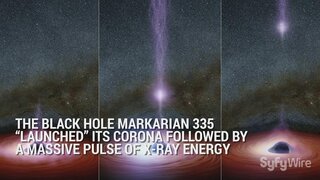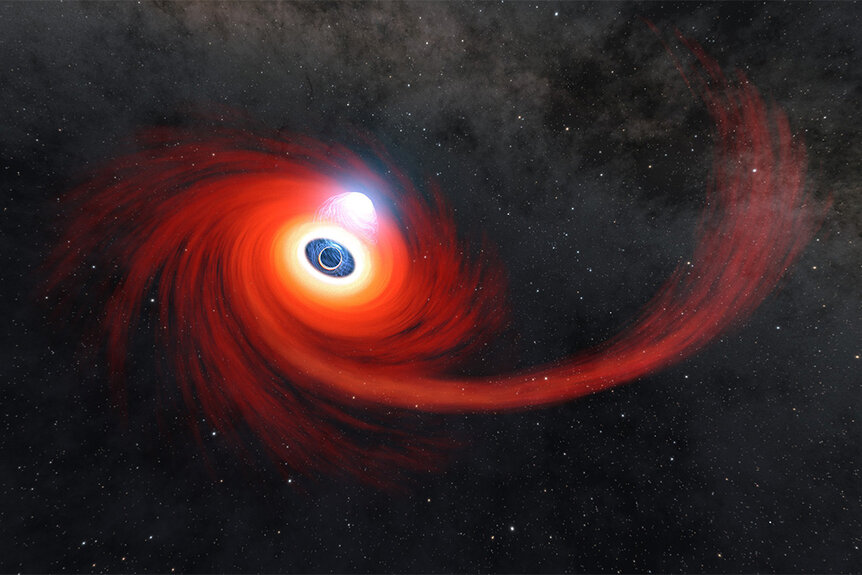Create a free profile to get unlimited access to exclusive videos, sweepstakes, and more!
Black Holes “Burp” After Gobbling Up Stars
Excuse you! A recent study found that roughly half of all black holes “burp” after they swallow a star.
In the 1999 science fiction series Farscape (streaming now on Peacock), astronaut John Crichton accidentally slips into a wormhole and gets launched halfway across the universe. In the Farscape universe, wormholes are believed to be the result of two distant black holes forming at the same time, and connecting to one another, creating a traversable rip in space-time. The bottom line is you can fall into one black hole and get spit out the other side.
In the real world, wormholes remain theoretical, but astronomers have seen bizarre bits of material being shot out of black holes. Black holes are known for being bottomless pits from which nothing ever escapes, not even light. They’ll chug down anything that slips over their event horizon like they’re shotgunning a soda and, sometimes, they burp. In fact, a recent study found that roughly half of all black holes “burp” after they swallow a star.
When Stars and Black Holes Collide
A few years ago, astronomers made global headlines when they published the first ever photograph of a black hole. The image is a ring of red-orange light, thicker on one side than the other, with a dark spot in the center. That’s because we can’t see black holes, not really. Seeing something requires light hitting it, bouncing off it, and hitting your eye. Light doesn’t bounce back from black holes, that’s kind of their whole deal. What you’re really seeing in that image is the accretion disk around the black hole.
RELATED: JWST Spies the Most Distant Supermassive Black Hole Ever Discovered
Accretion disks around black holes are created by matter getting too close and entering into an orbit around the event horizon. When that happens, the accreted matter is exposed to a bunch of energy, radiation, and heat, making it glow enough that we can see it with our instruments. Fortunately (for us, not for the stars and planets in question) black holes gobble stuff up all the time.
Astronomers spent several years observing these black hole interactions called Tidal Disruption Events (TDEs), during which stars get too close to a black hole and are eaten alive. That process doesn’t happen right away; black holes don’t actively eat things, they just don’t let stuff go. As a star approaches a black hole, intense gravitational forces rip the star apart, smearing it out in a thin halo around the black hole in a matter of hours. Over time, that material slips over the event horizon and into the black hole for good.
RELATED: A black hole tore a star apart and played with the debris
Before that happens, however, it’s not uncommon for at least some of the star to escape back into space. That’s because black holes aren’t very fastidious eaters. You can think of a black hole as a large but clumsy dog, messily gobbling kibble. In the dash to eat as much as possible a few bits are bound to get knocked out of the bowl. Historically, astronomers have been interested in those first few months after a TDE, when chunks of dismembered star get sloshed back out into space.
In the new study — posted to preprint server arXiv and not yet peer reviewed — astronomers watched black holes for years after a TDE to see what might happen. They found that about half the time, black holes spit material back into space months or years after their last meal. Researchers have taken to calling these latent bursts of energy “burps” because of the delay between consumption and regurgitation. In some cases, burps occurred between two and six years after a star was destroyed.
We wonder if black holes ever get embarrassed when they really let one rip. It seems only fair.
Catch the complete run of Farscape, streaming now on Peacock!































